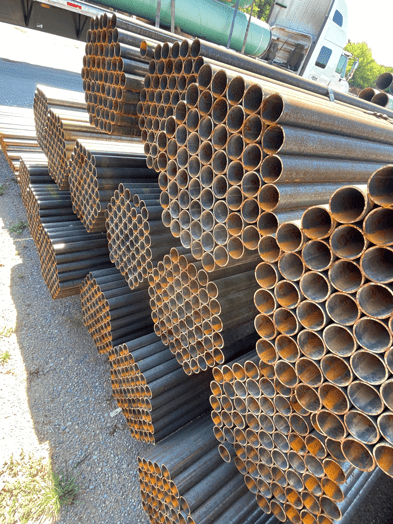800-764-7473
Local 208-324-2142

Ever wondered how oil and gas travel thousands of miles across continents, fueling our homes, cars, and industries? The answer lies beneath our feet, in a vast network of pipelines spanning continents. These underground arteries, transporting energy resources day and night, are engineering marvels that shape our modern world. In this article, we will look at the complexity of pipelines, their construction, and their significant role in energy transportation, including how even discarded materials, such as used oilfield pipe, play a role in this complicated system.
The global pipeline network is vast, covering approx. 2,175,000 miles. In the U.S., approx. 218,970 miles of pipelines transport various substances. These substances include oil, refined products, and natural gas liquids. Over 80,000 miles are for crude oil. Over 70,000 miles transport natural gas liquids. Petroleum products move through over 62,000 miles of pipeline. This infrastructure is essential for transporting energy resources. Pipe lines are connected to refineries, processing plants, airports, and gas stations. They also supply businesses and can be repurposed as used oilfield pipe.
The U.S. has over 2.5 million miles of natural gas pipelines. This is enough to circle the globe over 100 times. This network is larger than the 220,000 miles of liquid pipelines. Liquid pipelines can be repurposed as used oilfield pipes. Natural gas pipelines move gas from production sites. Then, the gas goes to processing and purification centers. Smaller distribution lines take the gas to homes and businesses. This covers a larger area than oil pipelines.
Oil and gas pipelines typically range from 4 to 48 inches in diameter, made of steel or plastic, and buried 3 to 6 feet underground for protection. They’re often shielded with materials like wood, concrete, and sand to prevent damage and corrosion. Natural gas pipelines, also typically made of carbon steel, can range from 2 to 60 inches in diameter. Repurposed as oilfield pipes, these materials find new life beyond their original purpose.
Oil pipelines, sometimes repurposed from used oilfield pipes, rely on centrifugal pumps powered by electric motors or occasionally diesel/gas turbines to maintain a continuous flow of oil at 3-8 mph. Pumps are strategically placed every 20-100 miles, depending on terrain and pipeline specifications. Computerized SCADA (Supervisory Control and Data Acquisition) systems monitor flow, pressure, and speed 24/7/365, ensuring efficient operation and delivery, even over long distances like the 14-22 days for oil to travel.
Pipeline construction decisions involve a careful balancing act between utilizing existing infrastructure like power lines or repurposed oilfield pipes, minimizing environmental and community impact, respecting cultural sites, and conducting environmental studies. Companies often follow existing right-of-ways to reduce disruption while avoiding populated areas and cultural landmarks. Horizontal directional drilling (HDD) allows pipelines to tunnel under bodies of water, minimizing environmental impact. These agreements grant companies the right to build and maintain infrastructure while ensuring the protection of the environment and the well-being of people in the area.
Additionally, companies are responsible for maintaining the right-of-way to minimize disruption and ensure the safety of the community.
Pipeline construction, whether using new or repurposed used oilfield pipe, begins with obtaining regulatory permits and approvals. Once cleared, the right-of-way is prepared for trenching or boring to accommodate the pipeline. Pipe sections are welded together, inspected for quality, and coated with anti-corrosive material. Cathodic protection, an electrical current, is applied for further corrosion prevention. Before the operation, the entire pipeline undergoes rigorous testing by pumping pressurized water to detect leaks or issues, ensuring all components are fully operational.
Curious to learn more about the complicated pipelines and the role of used oilfield pipes in this essential infrastructure? Contact Bison Pipe today to discover how we are leading the way in sustainable and efficient pipeline solutions. Our expertise ensures that even discarded materials find new life in powering our world.